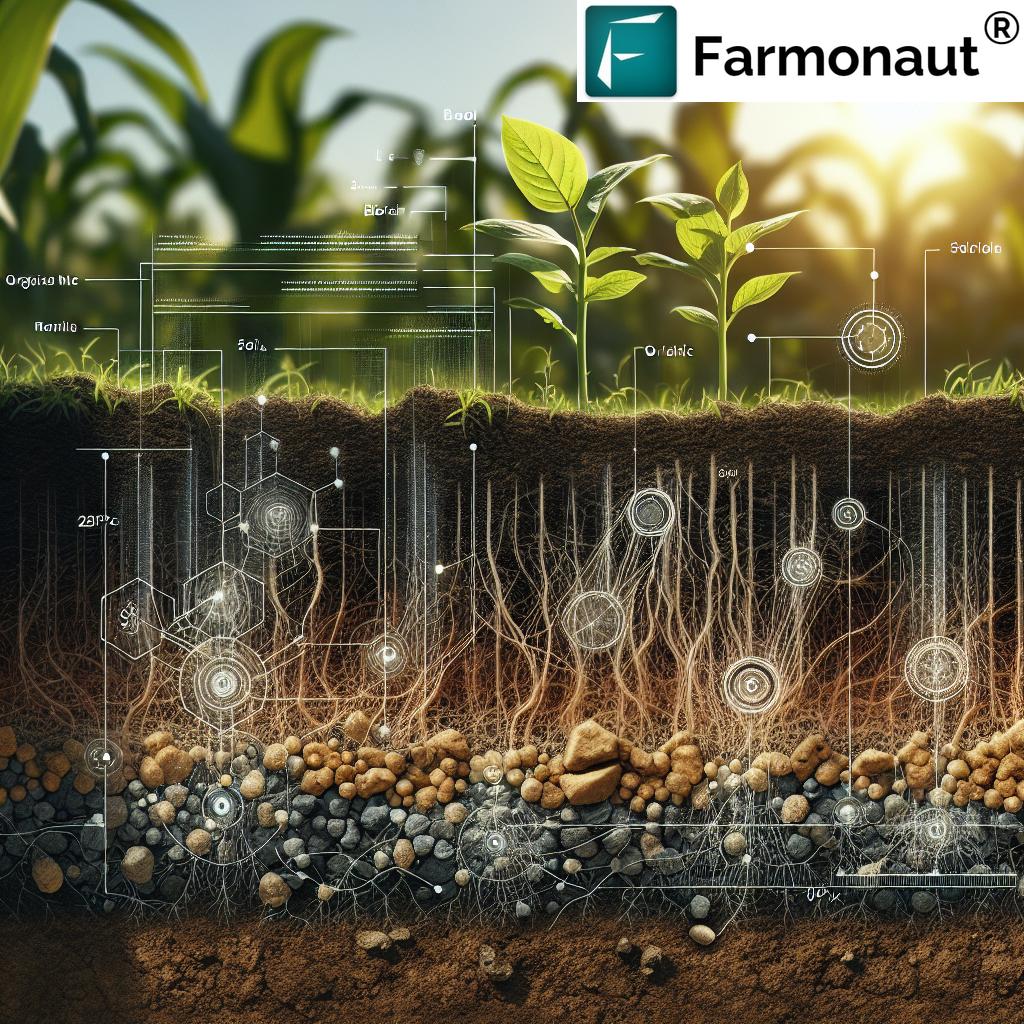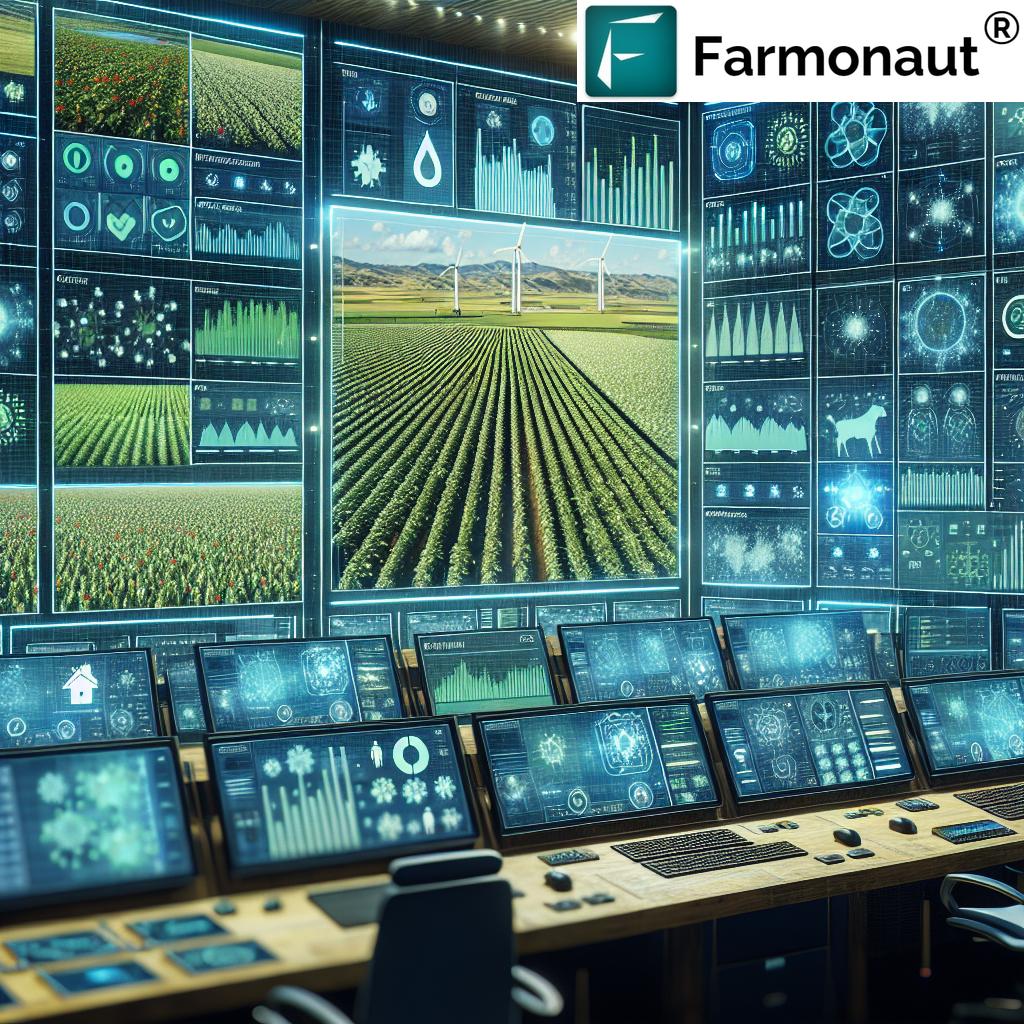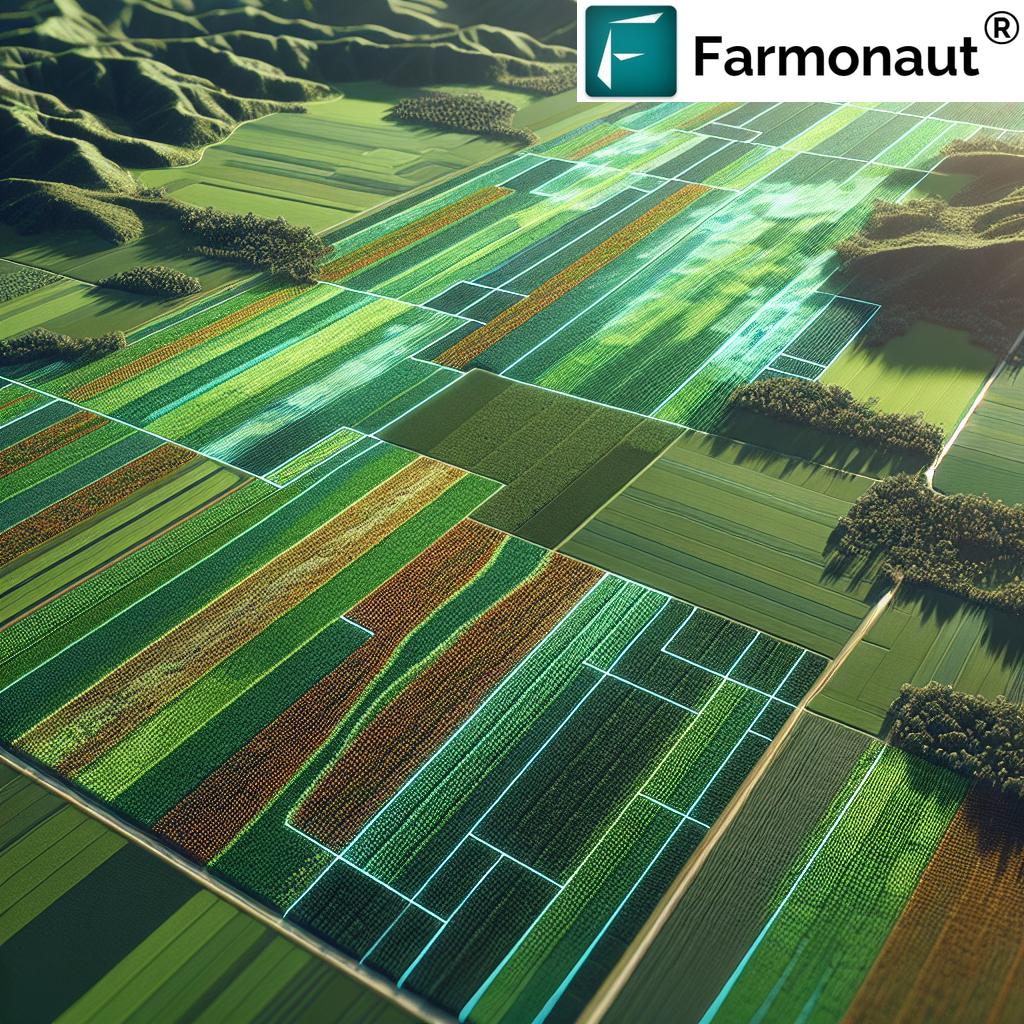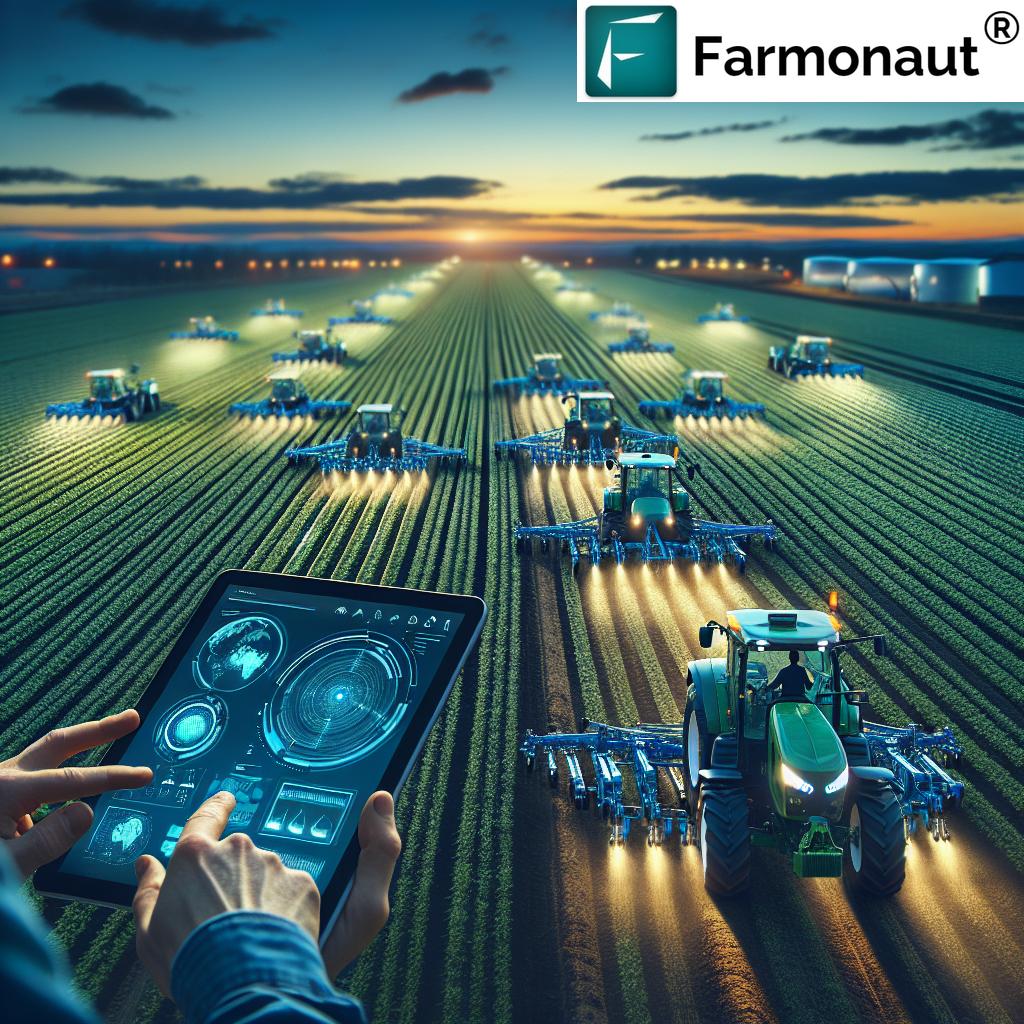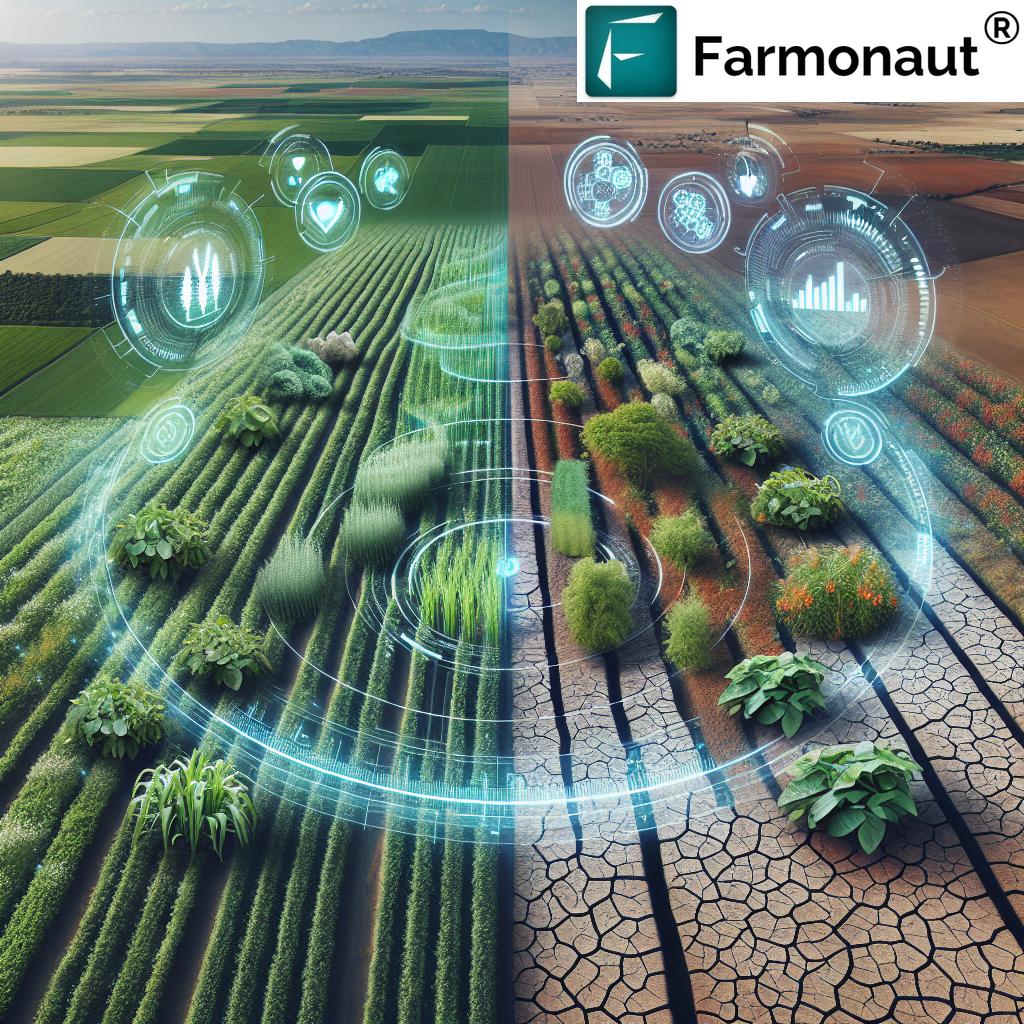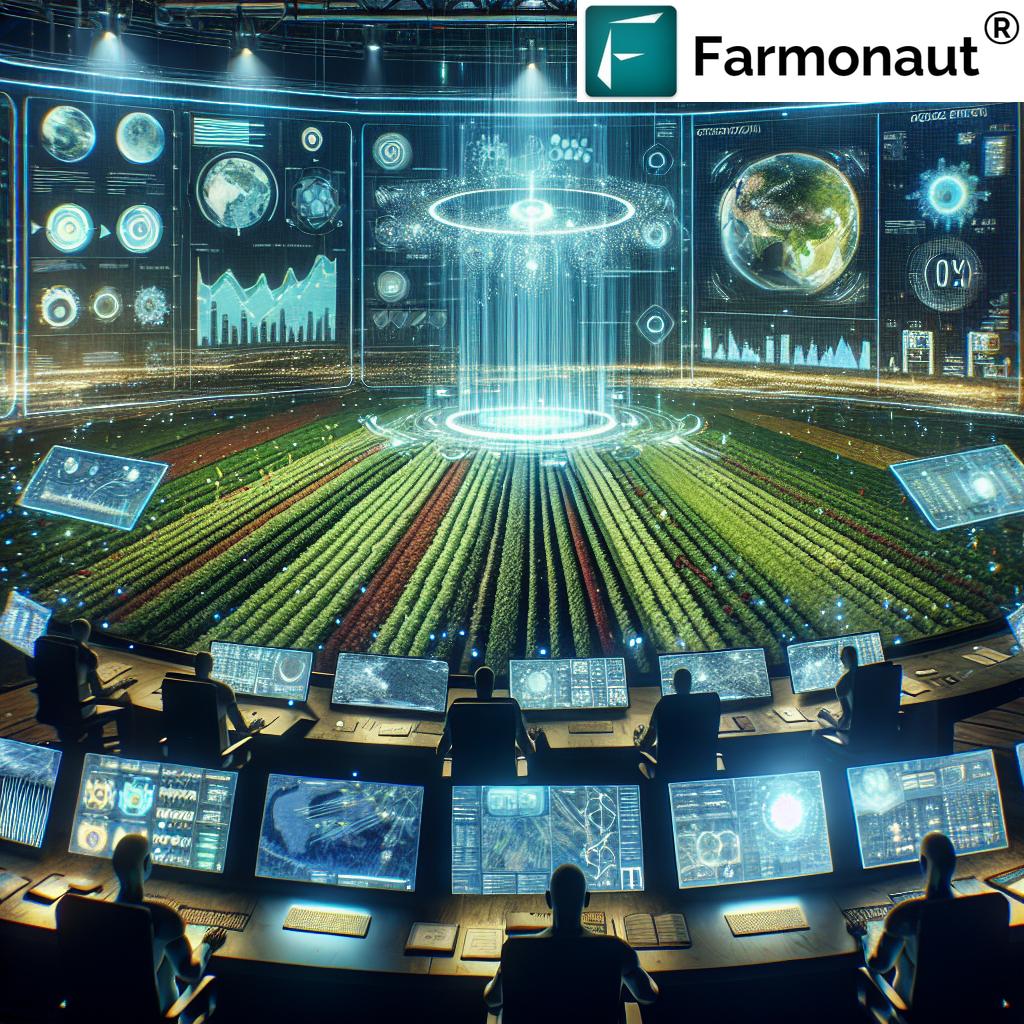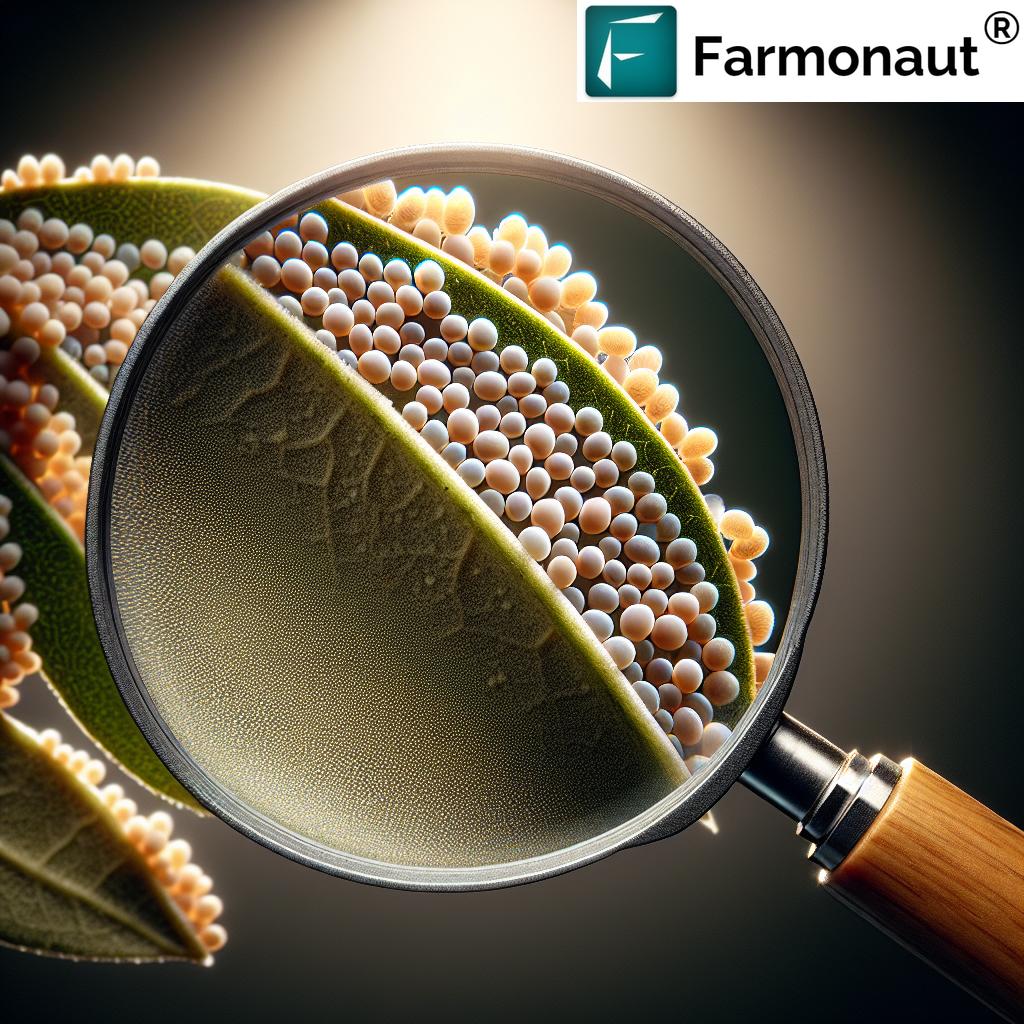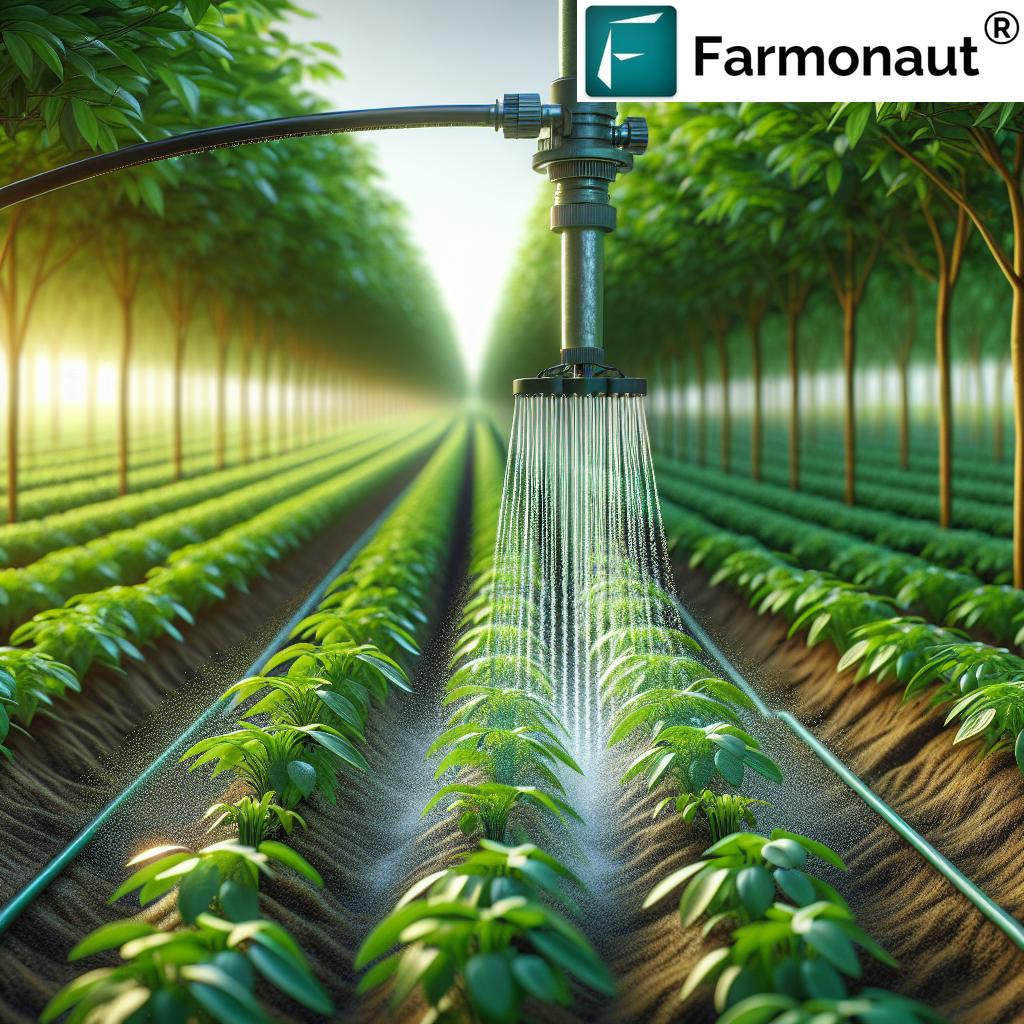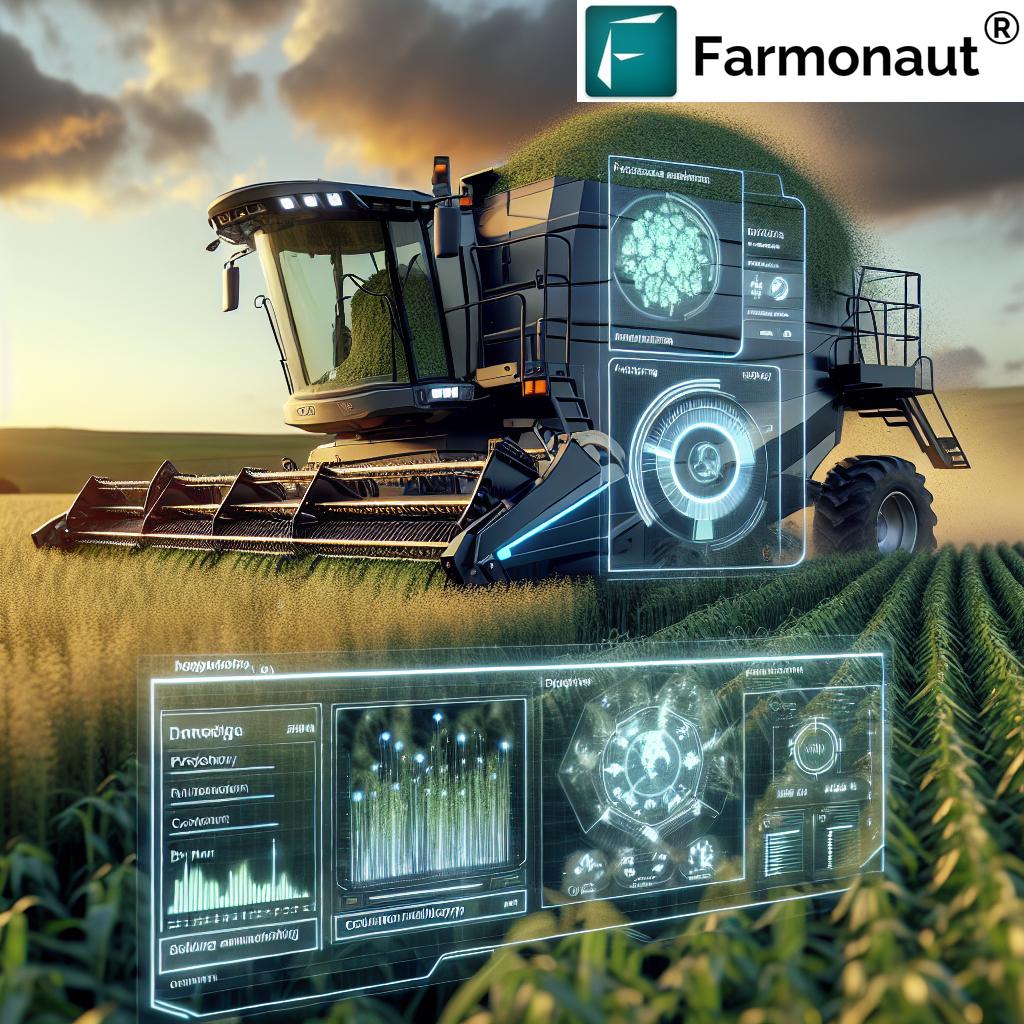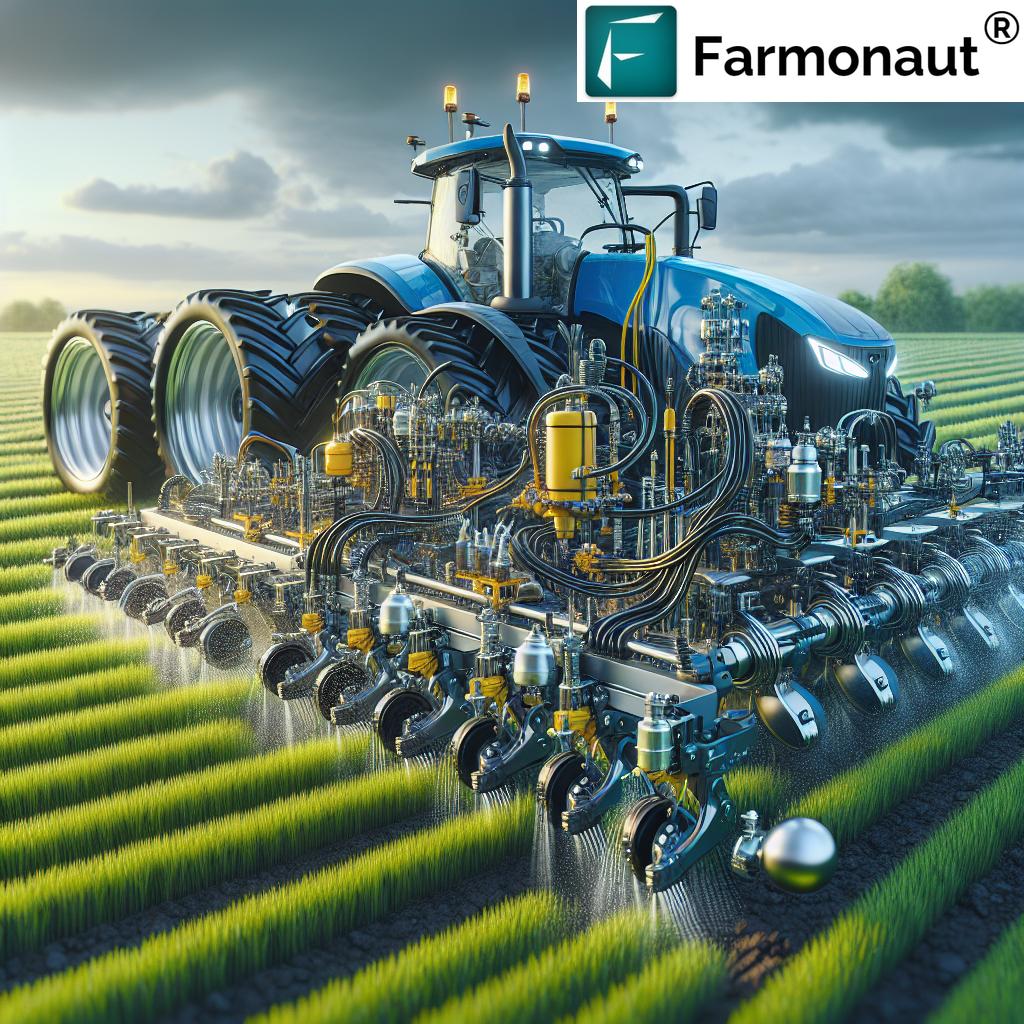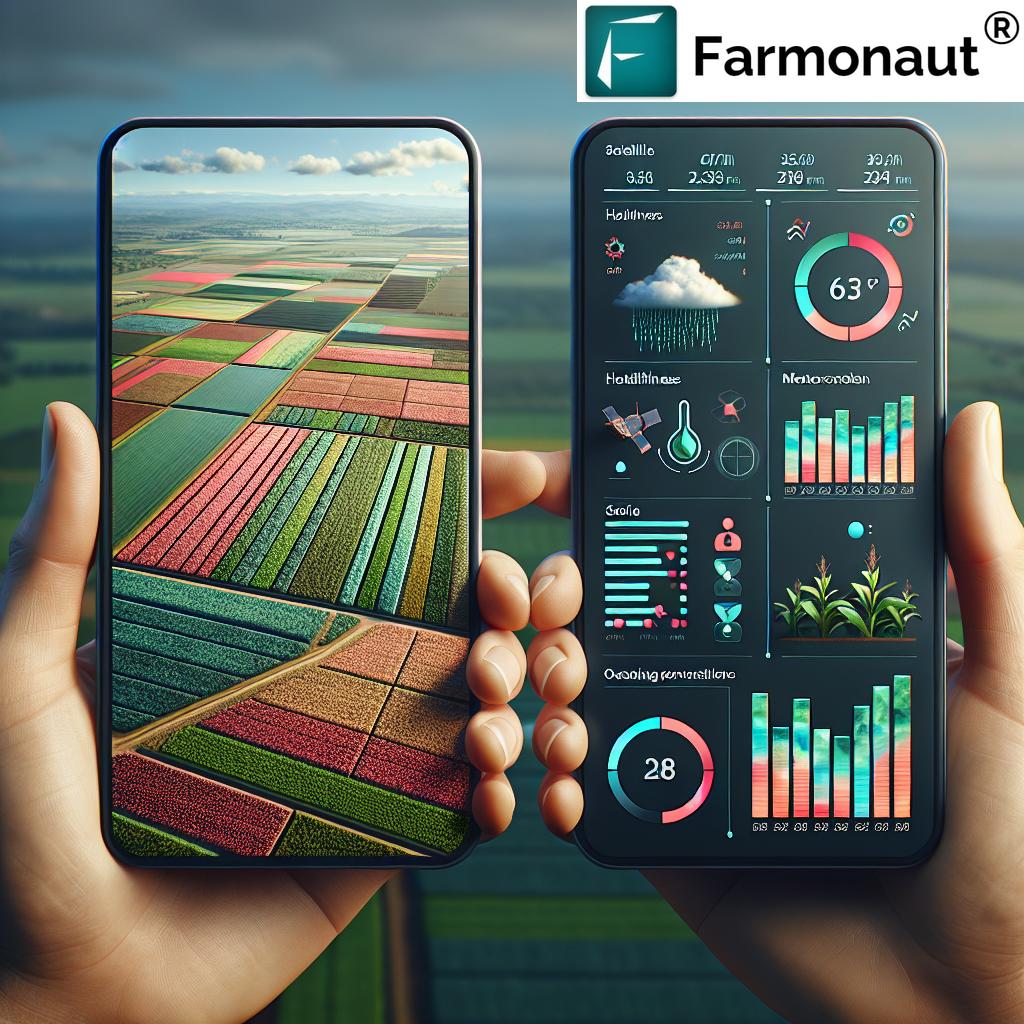Advanced Soil Technologies: 7 Powerful Ways to Boost Yields
“Digital soil mapping can increase crop yields by up to 20% through precise nutrient management.”
Table of Contents
- Introduction
- 1. Digital Soil Mapping and Remote Sensing
- 2. Soil Sensors and Real-Time Monitoring
- 3. Artificial Intelligence and Machine Learning
- 4. Nanotechnology in Soil Management
- 5. Biochar Application for Soil Fertility
- 6. Smart Irrigation Systems
- 7. No-Till and Conservation Tillage Practices
- Comparative Table: Advanced Soil Technologies at a Glance
- Beyond 7: Additional Groundbreaking Soil Innovations
- Farmonaut: Driving the Next Era of Precision Agriculture
- FAQ – Advanced Soil Technologies
- Conclusion
Introduction: The Revolution of Advanced Soil Technologies in Agriculture
The world of agriculture, farming, and forestry is undergoing a seismic shift. Advanced soil technologies are at the heart of this change. By leveraging digital soil mapping, artificial intelligence in agriculture, real-time soil monitoring, and more, we are moving towards a future where improved soil health, higher yields, and sustainable farming techniques are not just possible—they are increasingly accessible and practical for farmers worldwide.
Why does this matter? The planet faces significant challenges: nutrient depletion, water scarcity, soil degradation, and climate change. As our population grows, maximizing food security while preserving our resources is more urgent than ever. The latest technologies help us optimize every field, ensure precise management of soil and water resources, and move closer to a truly sustainable system of agricultural production.
Let’s explore the most promising soil health innovations, unpack how precision agriculture practices and tools are reshaping the global food landscape, and discover the seven most powerful ways these advancements can boost yields and build a resilient agricultural future.
1. Digital Soil Mapping and Remote Sensing: Precision Mapping for Soil Health
Digital Soil Mapping (DSM) stands at the frontier of precision agriculture practices. By integrating geospatial data from satellites and remote sensors with field samples, DSM creates high-resolution maps detailing soil properties at every point of a field. This enables us to optimize inputs—fertilizers, irrigation, and more—based on specific needs.
- Utilizes advanced algorithms and Geographic Information Systems (GIS) for analyzing collected data
- Drones equipped with multispectral and hyperspectral sensors capture images across various light spectra
- Processed information is rendered into digital field maps, supporting informed decision-making
- Improves nutrient management, increases yield, and enhances sustainability
By mapping the variability in soil health across an area, DSM allows farmers to tailor fertilizer application, maximize water retention, and reduce waste for a better harvest. The combination of remote sensing and digital mapping also provides early detection of crop stress and potential challenges like depletion or contamination.
Want to unlock satellite-based digital soil mapping for your fields? Explore our Agro Admin App for large-scale farm management and mobile app options.
How Digital Soil Mapping Transforms Productivity
- More Precise Fertilizer Use: Only the necessary nutrients are applied, precisely where needed
- Better Disease & Pest Detection: Early identification of risk areas
- Enhanced Water Management: DSM informs smart irrigation systems, ensuring optimal water use
- Supports Conservation: Protects biodiversity by minimizing disturbance
“Precision agriculture technologies can reduce water usage in farming by as much as 30%.”
2. Soil Sensors and Real-Time Soil Monitoring
Modern soil sensor technology is revolutionizing how we observe and manage soil conditions. Portable devices using methods like Laser-Induced Breakdown Spectroscopy (LIBS) and Near-Infrared Spectroscopy (NIR) provide instant readings on soil’s organic matter, mineral composition, moisture, and even contaminants.
- Rapid Analysis: Real-time data collection enables timely interventions
- Cost-Effective: Replaces expensive, slow lab tests
- Decision-Support: Data integrates with precision agriculture platforms for instant recommendations
By implementing real-time monitoring into our soil management practices, we can optimize irrigation systems, fertilizer application, and pinpoint areas needing urgent attention. The result is not only increased productivity but also reduced input costs and environmental impact.
For seamless integration of remote sensor data with decision support, check out the Farmonaut Fleet Management platform—optimize equipment use based on real soil and crop conditions.
Spectroscopic Soil Sensors: Fast and Effective
- LIBS: Breaks down a tiny part of the soil to analyze its light emission profile—revealing composition instantly
- NIR: Uses light absorption at specific wavelengths to estimate organic matter and nutrients
These devices support more adaptive management especially on fields impacted by variable soil fertility, salinity, or past over-cultivation.
3. Artificial Intelligence and Machine Learning: Data-Driven Farming
What happens when the world’s data crunches your harvest potential? Artificial intelligence in agriculture is powering the next leap forward in soil and farm management. By analyzing enormous datasets—satellite images, soil sensor readings, weather patterns, historical yields—AI and ML (machine learning) are fueling smarter, faster decisions.
- AI models predict soil health, nutrient cycles, pest risk, and yield potential
- Machine learning algorithms learn from every new piece of data, constantly improving recommendations
- Supports precision input application, reducing waste and environmental impact
With advanced AI-powered advisory systems like Farmonaut Jeevn, we can deliver real-time, customized recommendations—even down to a specific part of a field—helping farmers overcome challenges, optimize resources, and maximize yields.
Interested in next-gen AI solutions? Farmonaut provides platforms and APIs for developers to build customized advisory systems and access granular, satellite-driven analytics. Explore our developer docs to get started.
Benefits of AI in Modern Soil Management
- Automated anomaly detection: Quickly spot emerging threats and soil degradation
- Predictive analytics: Anticipate weather events or nutrient cycles for better planning
- Actionable insights: Tailored, actionable steps based on evolving farm data
4. Nanotechnology in Soil Management
Nanotechnology in agriculture unlocks new levels of precision and efficiency in soil management. Nanofertilizers and nanosensors vastly outperform their conventional counterparts in delivering targeted nutrition and monitoring soil health.
- Nanofertilizers: Minimized particle size means better absorption and less nutrient loss or leaching
- Nanosensors: Miniaturized sensors monitor pH, nutrient levels, and toxins in the soil in real time
- Reduction in fertilizer-related pollution and improved fertility
By deploying nano fertilizers and nano sensors, farmers obtain up-to-the-moment feedback on soil conditions and can act immediately to address deficiencies or toxicities—raising efficiency and minimizing impact. These innovations also support the delicate balance necessary for sustainable farming techniques.
For holistic farm sustainability and to reduce your operations’ carbon footprint, learn about Farmonaut’s carbon footprint monitoring service and optimize your farm’s sustainability efforts.
How Nanotechnology Is Changing Agriculture
- Improved nutrient uptake for plants with lower input costs
- Early-warning systems for soil stress and contamination
- Critical for addressing challenges of nutrient depletion and climate change
5. Biochar Application for Soil Fertility and Health
Among the oldest and most sustainable farming techniques making a comeback, biochar for soil fertility stands out. Biochar is a stable, carbon-rich product made by pyrolyzing organic material in low-oxygen conditions. Added to soil, it brings remarkable benefits:
- Improves soil structure and increases water retention
- Reduces soil acidity and increases nutrient-holding capacity
- Acts as a carbon sink, removing CO₂ from the atmosphere—essential for climate change mitigation
- Promotes microbial diversity and fosters healthier plant growth
Use of biochar boosts crop yields, prevents nutrient leaching, and supports sustainable and regenerative soil management practices.
For accurate disease/pest mapping and to track changes in field soil condition, leverage Farmonaut’s crop plantation and advisory solutions.
Biochar’s Advantages
- Is especially effective on degraded or sandy soils facing water scarcity and low fertility
- Reduces the need for synthetic fertilizers by holding nutrients in available forms for longer
6. Smart Irrigation Systems
Water is life, and nowhere is efficient water use more critical than on the farm. Smart irrigation systems harness sensors, drones, artificial intelligence, and cloud data to respond dynamically to real-time soil conditions and crop requirements.
- Prevent over-irrigation and reduce nutrient leaching
- Automatically adjust to changes in weather, soil moisture, and plant needs
- Cut water use by as much as 30%, support sustainable farming, and lower operational costs
By adopting smart systems, we ensure every drop of water—and every bit of fertilizer—brings maximum benefit, supporting resilient agriculture in the face of climate change and water scarcity.
For seamless field operations and reducing input waste, consider Farmonaut’s Large Scale Farm Management solutions. Track and coordinate your team, machinery, resources, and field data from a single dashboard or across an entire region.
7. No-Till and Conservation Tillage Practices
Traditional tillage can disrupt soil structure, promote erosion, and deplete organic matter. No-till and conservation tillage methods protect soil by leaving residues and keeping the field surface undisturbed.
- No-till: Crops are planted directly into previous residues without turning the soil
- Conservation tillage: Minimal soil disturbance, maximizing water retention and soil biodiversity
- Improves organic content and fertility—key drivers for higher yields
- Drastically reduces erosion and carbon loss, supporting climate-friendly agriculture
These techniques are not only about protecting the soil but also about building long-term productivity, combating desertification, and improving overall food security. Their low-tech nature makes them especially accessible for small and medium farmers.
Comparative Table: Advanced Soil Technologies at a Glance
| Technology Name | Main Function | Estimated Yield Improvement (%) | Water Use Reduction (%) | Sustainability Impact | Example Application |
|---|---|---|---|---|---|
| Digital Soil Mapping (DSM) & Remote Sensing | High-resolution soil property mapping & monitoring | Up to 20% | 15–20% | High | Variable-rate fertilizer application |
| Soil Sensors & Real-Time Monitoring | Instant analysis of soil moisture, nutrients, and more | 10–15% | 10–20% | High | Moisture-based irrigation control |
| Artificial Intelligence & Machine Learning | Intelligent data analysis and predictive recommendations | 10–25% | 10–30% | High | AI-driven crop management |
| Nanotechnology in Soil Management | Enhanced nutrient delivery & monitoring | 15–20% | 10–15% | High | Use of nanofertilizers in high-value crops |
| Biochar Application | Improves soil fertility & carbon sequestration | 10–15% | 5–10% | High | Biochar added to sandy or degraded soils |
| Smart Irrigation Systems | Automated, data-driven irrigation scheduling | 8–12% | 20–30% | High | Precision drip & pivot irrigation |
| No-Till & Conservation Tillage | Reduces soil disturbance, retains organic matter | 5–12% | 5–10% | High | Continuous grain & legume cropping |
Beyond 7: Additional Groundbreaking Soil Innovations
While the seven solutions above form the backbone of any modern farming system, global leaders in soil health are advancing beyond, with practices like:
- Alternate Wetting and Drying (AWD) in Rice Cultivation: Alternating wet and dry periods in rice fields to save water, lower methane emissions, and improve root vigor.
- Zaï Technique: Small planting pits concentrate water and organic matter—revitalizing degraded soils and fighting desertification.
- Integrated Soil Fertility Management (ISFM): Harmonizing organic and inorganic inputs, improved crop varieties, and conservation efforts for balanced soil fertility and higher food security.
While not all forward-thinking farmers need to adopt every method at once, even gradual integration of these innovations leads to cumulative improvements in sustainability, yield, and resilience.
Farmonaut: Driving the Next Era of Precision Agriculture
As we witness an explosion in advanced soil technologies, connectivity and data integration are no longer optional—they are essential. Farmonaut is dedicated to making precision agriculture and digital soil mapping affordable, practical, and scalable for everyone from small-holder farmers to massive agribusinesses and even government programs.
- Satellite-based crop health monitoring: Leverage multispectral imagery to monitor plant and soil conditions, detect problems before they escalate, and boost yields season after season.
- Jeevn AI Farm Advisory: Custom, data-driven insights—delivered to your device or interface—in real time, harnessing AI and ML to maximize productivity.
- Blockchain-based traceability solutions: Transparency from farm to food, reducing fraud and strengthening food safety. Discover the power of secure traceability for your supply chain.
- Fleet/resource management: Track and optimize agriculture logistics using real-time field and asset analytics for cost-effective operations.
- Carbon footprinting & sustainability: Our solutions support carbon tracking and help you document and reduce the environmental impacts of your farm. See how you can support your environmental goals.
- Access via mobile, web, and comprehensive API: Engage with Farmonaut via mobile apps, web-based dashboards, or integrate satellite/soil data into your system with our API and developer docs.
- Financial tools: Leverage satellite-based crop verification for loans and insurance to facilitate accessible, trustworthy financing for every farmer.
What sets Farmonaut apart is our belief that technology should be affordable, understandable, and actionable. No matter the size or type of farm, our users access a robust suite of solutions designed to increase yields, drive sustainability, and secure the future of food.
FAQ – Advanced Soil Technologies
What is digital soil mapping?
Digital soil mapping (DSM) uses satellite imagery, remote sensing, and field samples to produce detailed, high-resolution maps of soil properties, enabling precision application of fertilizers and irrigation for higher yields and more sustainable practices.
How do soil sensors enhance crop management?
Soil sensors provide real-time data about soil moisture, nutrient content, temperature, and contaminants, allowing farmers to make informed decisions to optimize inputs and prevent overuse or underuse of resources.
How does AI impact modern agriculture?
Artificial intelligence in agriculture analyzes large datasets to predict crop health, soil fertility trends, and weather risks. This leads to smarter, proactive management for maximizing crop productivity and resource efficiency.
What are the benefits of nanotechnology in agriculture?
Nanotechnology enables the creation of nano fertilizers for precise nutrient delivery and nano sensors for instant soil health monitoring, increasing efficiency and reducing fertilizer runoff for sustainable farming.
Why is biochar recommended for soil improvement?
Biochar improves soil structure, increases water retention, sequesters carbon, and boosts nutrient availability, leading to enhanced fertility and supporting climate change mitigation.
How do smart irrigation systems work?
Smart irrigation systems integrate sensors, AI, and weather data to adjust watering schedules and amounts automatically, minimizing water waste and enhancing crop health.
What is no-till farming and why is it sustainable?
No-till farming involves growing crops without plowing, thereby preserving soil structure, reducing erosion, increasing organic matter, and promoting long-term productivity.
Conclusion: Building The Future of Sustainable Farming with Advanced Soil Technologies
As custodians of our land and food system, we must embrace advanced soil technologies to meet the mounting challenges of the 21st century. Through digital soil mapping, cutting-edge soil sensor technology, artificial intelligence in agriculture, nanotechnology, biochar for soil fertility, smart irrigation systems, and conservation practices, we can now cultivate resilient landscapes, boost yields, and protect our environment for generations to come.
By integrating these innovations into farming and forestry, we are not just increasing productivity—we are unlocking a new model for sustainable development, food security, and climate resilience.
At Farmonaut, we are committed to making these tools accessible—connecting tradition and technology for the benefit of every farmer, big or small.
The future of food depends on the choices we make today—let’s choose progress, precision, and sustainability.









